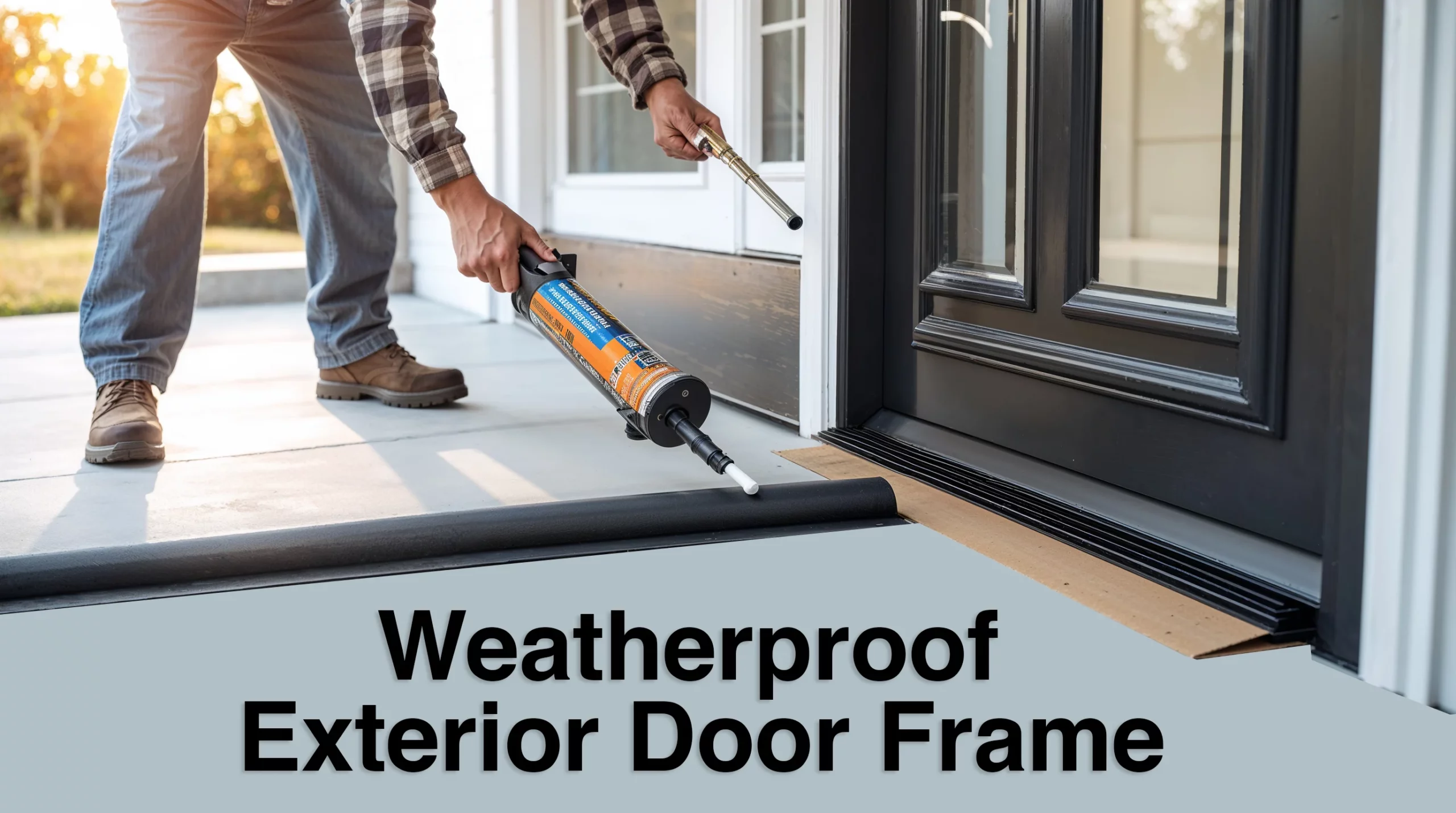
23 Oct Weatherproof Exterior Door Frame
A weatherproof exterior door frame helps protect your home from rain, wind, and changing weather conditions. It keeps water from entering through the gaps around your door and prevents damage to the frame, flooring, and walls. When you know how to weatherproof your exterior door, you can make your home more comfortable, energy-efficient, and long-lasting. In this guide, we’ll explain everything about weatherproofing doors what it means, why it’s important, and how you can do it easily with simple materials and steps. Whether you’re fixing an old frame or installing a new one, this article will help you understand every part of the process clearly.
Understanding Why Weatherproofing Matters
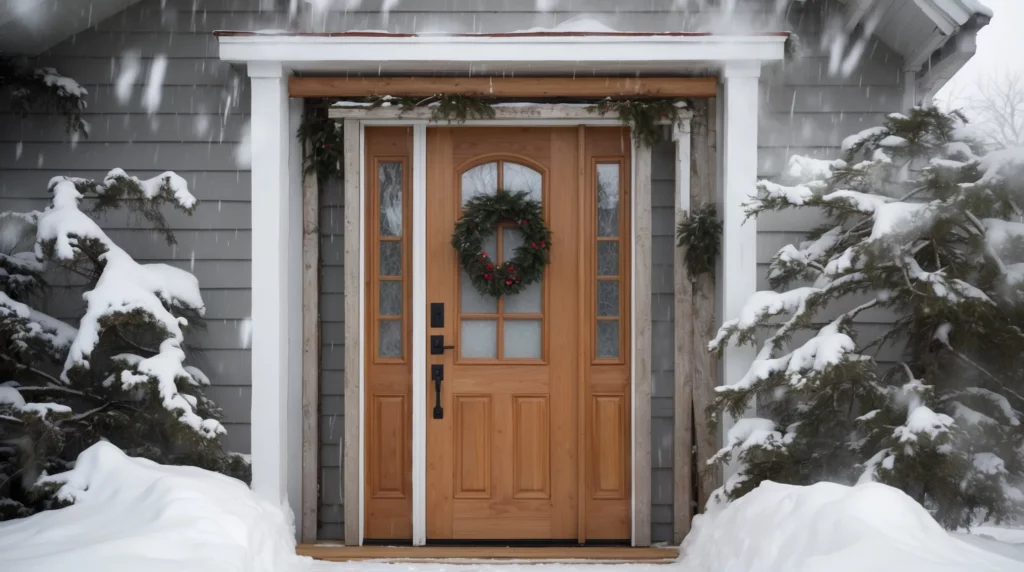
Weatherproofing your doors is one of the simplest and smartest ways to protect your home. Rainwater, snow, and strong winds can easily find their way inside if the frame isn’t sealed properly. Over time, this moisture can cause the wood around the door to rot, warp, or grow mold. Even small gaps can let in cold air during winter or heat in the summer, making your home less energy-efficient.
A weatherproof exterior door frame prevents these issues by creating a barrier between the outdoor weather and your indoor space. It keeps your home dry, quiet, and comfortable. Besides protecting the structure, it also helps lower your energy bills by stopping drafts that make heating or cooling systems work harder.
The Importance of Protecting Your Exterior Door Frame
Your exterior door frame does more than just hold the door in place — it supports the weight, ensures a tight seal, and blocks unwanted air or moisture. When it’s not properly protected, water can seep in through small cracks or spaces, especially during heavy rainfall or snowmelt.
A damaged or weak frame leads to many problems, such as squeaky hinges, sticking doors, or even water stains on the floor. Proper door waterproofing stops these issues before they start. It saves you from costly repairs and helps the door function smoothly for years.
Every homeowner should understand how to weatherproof exterior door areas, not just for appearance but also for the safety and durability of their home. A small effort in maintenance can extend the life of your door system by several years.
What Is a Weatherproof Exterior Door Frame?
A weatherproof exterior door frame is designed to seal out rain, snow, and wind while keeping indoor air stable. It uses special materials and sealing methods to stop water or air leaks. These frames are often made of fiberglass, treated wood, or composite materials that resist swelling and decay.
The main goal is to keep your door area dry. This includes sealing the sides, top, and especially the bottom, where most leaks happen. Many homeowners think the door itself does all the work, but the frame and its seals are just as important.
When paired with proper weatherproofing for doors, a strong frame prevents rot, rust, and peeling paint. It also helps avoid issues like swollen doors that don’t close properly or metal frames that corrode over time.
How to Weatherproof Exterior Door for Long-Term Protection
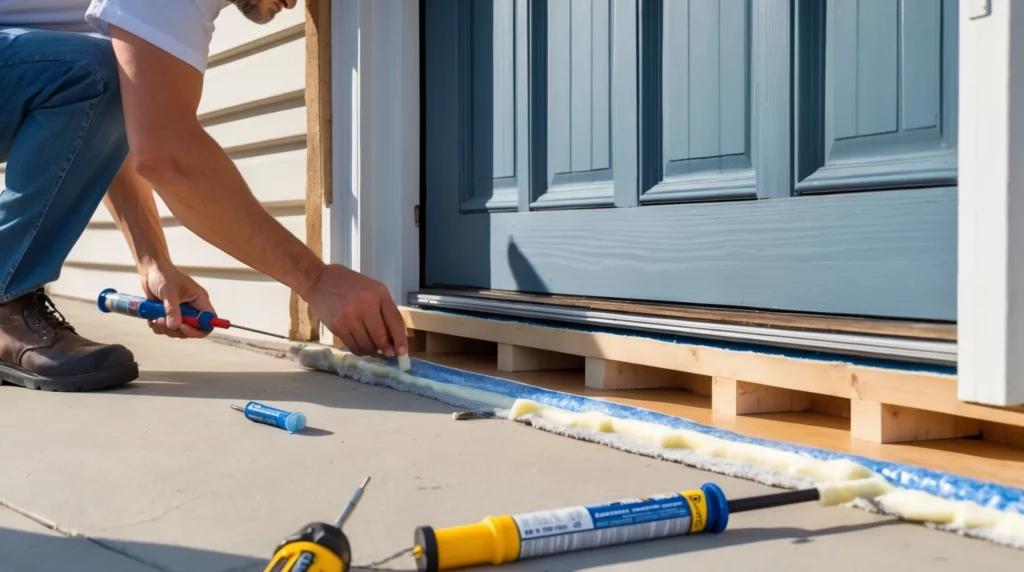
Learning how to weatherproof exterior door systems doesn’t have to be hard. You can do it yourself with a few basic tools and materials. Start by checking for gaps around the door frame. Close the door and look for any light coming through. If you see daylight, air, or moisture can easily pass through those spots.
To fix this, install weather stripping for doors along the sides and top of the frame. This creates a flexible seal that compresses when the door closes. You can also use caulk to fill cracks or seams between the frame and the wall. For larger openings, foam sealant works well.
At the bottom, use a sweep for the bottom of the door to block drafts and water splashes. Door sweeps come in rubber or metal types and can be attached easily with screws. Together, these steps help you seal the entire frame and make it weatherproof.
Effective Door Waterproofing Techniques
Door waterproofing involves more than just adding seals it’s about directing water away from the door completely. The first step is to make sure the door sill (the base of the frame) slopes slightly outward. This small angle allows rainwater to flow away instead of pooling under the door.
Use a high-quality silicone caulk around the door sill and bottom corners. Silicone is flexible, waterproof, and long-lasting. It stays intact even when temperatures change. You can also install a door weather protector or drip edge above the door to keep rainwater from running down directly.
For homes in areas with heavy rain or snow, exterior door waterproofing can also include a small awning or overhang. This adds another layer of protection, reducing the amount of moisture your door frame is exposed to daily.
Choosing the Right Weatherproof Door Materials
When you plan to upgrade or replace your door, the material you choose makes a big difference in how weatherproof it will be. Traditional wooden doors are beautiful, but they can absorb moisture over time. If you prefer wood, select pressure-treated or sealed varieties.
Fiberglass doors are a great choice because they resist moisture, won’t warp, and can look like natural wood. Steel doors are strong and durable, but they must be coated properly to prevent rust. Aluminum frames paired with waterproof exterior doors provide excellent protection and require very little maintenance.
Using the right materials ensures that your investment lasts. Many homeowners combine these durable doors with external door weather seal systems to get the best protection possible.
Weather Stripping and Sealing Solutions for Doors
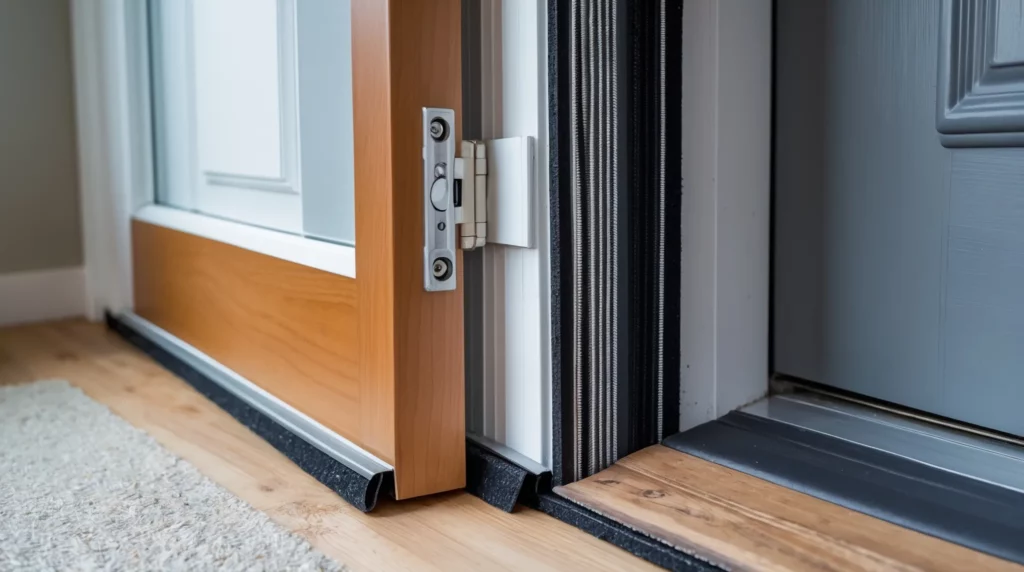
Weather stripping is one of the simplest ways to keep your home sealed and comfortable. It fills the small gaps between the door and frame where air and water can enter. There are several types of weather stripping for doors, including foam tape, rubber gaskets, and metal strips.
Before installing, clean the frame thoroughly so the adhesive sticks properly. Apply the stripping evenly around the door edges. To seal the bottom of exterior door areas, you can add a door sweep or threshold seal that stops air from leaking underneath.
In addition, consider installing door seals for exterior doors made from vinyl or silicone. These materials can handle extreme temperatures without cracking. Regularly check your seals for wear and replace them when needed. A tight seal not only prevents drafts but also keeps insects and dust outside where they belong.
Waterproof Exterior Door Frame Installation Tips
Installing a waterproof exterior door frame takes patience and precision. Start by checking that the frame fits squarely into the opening. Uneven frames leave gaps that are hard to seal later. Always use a level to ensure the door is perfectly aligned before securing it.
Next, apply flashing tape around the door opening. This acts as a barrier to prevent water from getting behind the frame. Once the frame is in place, seal every edge with waterproof caulk. Make sure to fill even the smallest cracks.
When you’re done, add insulation between the frame and wall to improve energy efficiency. A properly installed frame will keep out water, wind, and outside noise. For added protection, use door sill waterproofing products to protect the bottom section, where leaks are most common.
How to Protect the Door from Rainwater and Exterior Damage
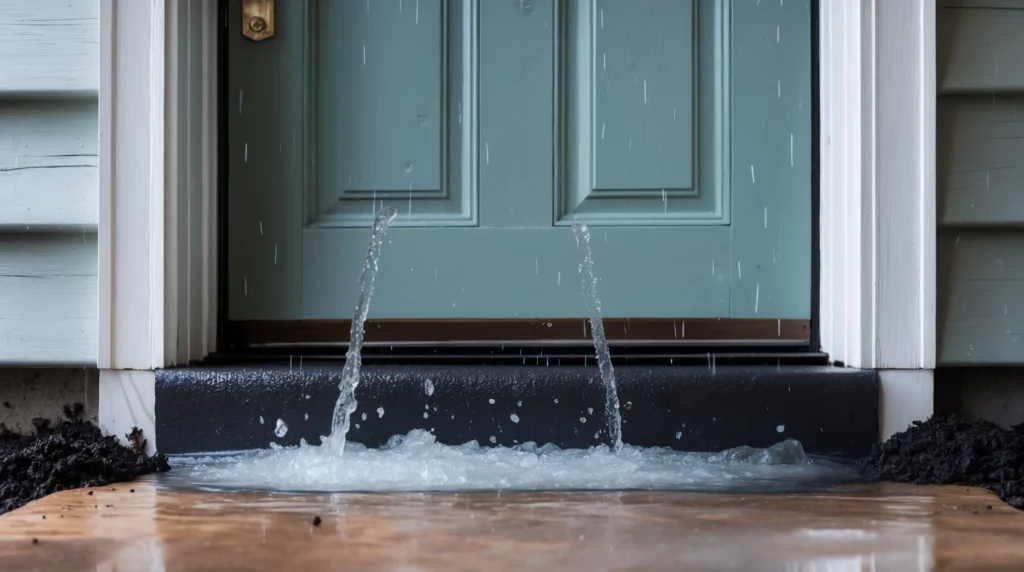
Rainwater can slowly damage doors if not managed correctly. To protect the door from rainwater, you should control how water flows around it. Installing a drip cap or rain guard above your door keeps moisture from dripping down into the frame. This is a simple and affordable fix that prevents long-term issues.
You can also use a door weather protector or a small awning to shield the area from heavy rain. Keep the door sill clear of debris and dirt so water can drain away easily. Regularly inspect the caulk and seals, as even small cracks can let moisture in.
In areas with strong weather, sealing a door threshold adds extra defense. Apply a thin layer of sealant between the threshold and the floor to stop water from seeping underneath. These little habits help your door frame stay strong and dry year-round.
Local Guide: Weatherproofing Doors in Idaho Falls
Homeowners in Idaho Falls face unique challenges due to cold winters and rainy seasons. These conditions can cause door frames to expand, contract, or absorb moisture. That’s why weatherproofing doors in this region is not just a choice — it’s a necessity.
Start by checking the bottom of your exterior doors for gaps or cracks. Install strong weatherproofing for doors, such as rubber gaskets and foam insulation strips. Keep an eye on your paint or finish, as worn paint allows water to penetrate deeper into the frame.
Professional inspections can also help detect hidden leaks early. Experts like Cksidaho offer services to test and seal your doors efficiently, ensuring that your home stays protected and energy-efficient throughout the changing seasons.
Final Thoughts: How Cksidaho Helps You Weatherproof with Confidence
Weatherproofing your door frame isn’t just about preventing water leaks — it’s about improving the safety, comfort, and durability of your home. A well-sealed weatherproof exterior door frame keeps out moisture, dust, insects, and cold air. It makes your house feel more comfortable while reducing energy loss.
Understanding how to weatherproof exterior door systems gives you control over your home’s protection. With proper sealing, high-quality materials, and regular maintenance, you can avoid costly repairs and enjoy peace of mind knowing your doors are built to last.
Cksidaho provides trusted guidance and professional help for homeowners who want to make their doors weatherproof and efficient. With years of hands-on experience, the team ensures your exterior doors and frames are properly sealed, installed, and ready to withstand any weather.
Ready to protect your home from rain and drafts?
Contact Cksidaho today for expert help with door sealing and weatherproofing solutions. Make your exterior doors stronger, longer-lasting, and worry-free.
